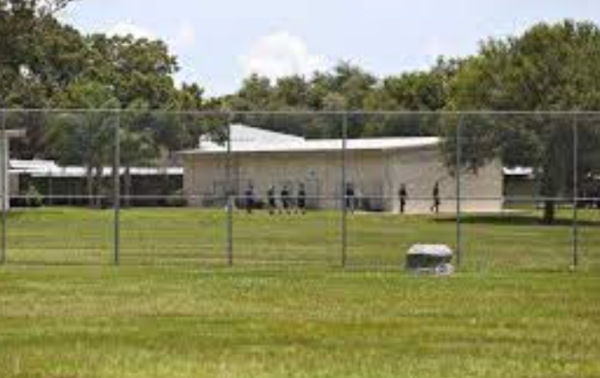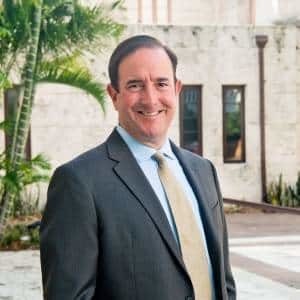
Startling revelations have emerged from a WPBF 25 News investigation, shedding light on a series of disturbing incidents that occurred at the Florida School for Boys in Okeechobee during the 1960s. Multiple students lost their lives under questionable circumstances, raising serious concerns about the school's past practices.
Recent revelations about the Florida School for Boys in Okeechobee have brought to light a dark chapter in the institution's history. However, the roots of the school's troubled past can be traced back to its predecessor in Marianna, which by the mid-1950s had become notorious for its overcrowded and harsh conditions.
After opening in 1900, the Marianna facility Florida School for Boys, also known as the Arthur G. Dozier School for Boys, quickly became one of the largest reform schools in the country. The overcrowding was so severe that children were forced to sleep head to foot, two to a twin bed. To address this issue, the state invested $4 million in constructing a new facility on 1,800 acres north of Lake Okeechobee. The town of Okeechobee eagerly welcomed the new institution, seeing it as an opportunity for economic growth and job creation.
An article in the Okeechobee News, dated December 1, 1957, hailed the groundbreaking ceremony attended by 1,500 residents and then-Governor LeRoy Collins as a turning point for the community. The paper proclaimed that the new school would become "the finest school of its kind in the world." Two years later, the first group of boys was transported from Marianna to the new facility, which had been designed to accommodate 500 students. Key staff members from Marianna were also transferred to oversee the operations at Okeechobee.
However, the initial optimism surrounding the new school quickly dissipated as troubling reports began to surface. Headlines shifted from lauding the facility to highlighting the increasing number of runaways. What many failed to realize was that the same form of discipline used at Marianna—brutal beatings with a leather strap—was also being employed at Okeechobee.
One distressing case involves the untimely demise of 13-year-old Cherry Black Jr., whose lifeless body was discovered floating face down in the school's sewage tank in October 1960. School officials asserted that Black had climbed into the tank to evade staff members and tragically drowned in the sewage. The coroner ruled it an accidental drowning, and no autopsy was conducted, according to Black's death certificate obtained by WPBF 25 News.
However, former student Marvin Mike has long maintained that the school's account of Black's death is a cover-up. Mike firmly believes that foul play was involved, stating, "I think they killed him and (threw) him in there. Why would you hide in there?" His suspicions have persisted for decades, casting doubt on the official narrative.
Another chilling incident took place in September 1965 when Patrick "Timmy" Gabriel was shot and killed during an alleged escape attempt. The school's superintendent claimed that Gabriel had launched an unprovoked attack before fleeing. According to reports, Gabriel was found by a woman and her daughter in their home, brandishing a hunting knife. The woman, fearing for her safety, shot Gabriel with a .38 Derringer, resulting in his death.
Years later, Gabriel's brother took to the internet in search of justice, alleging a cover-up in his brother's death. In an undated post, he revealed that Timmy had sustained a fatal gunshot wound between the eyes, and his family noticed signs of trauma and swelling upon receiving his body for burial.
Former students have come forward, alleging that boys were buried behind the school's old dairy barn. However, an inquiry by the Okeechobee County Sheriff's Office has confirmed that only one boy, who escaped in 1960, remains unaccounted for, according to a spokesperson from the office.
In the midst of these troubling revelations, Sonny and Betty Williamson, who resided adjacent to the school, recollect encounters with frightened runaways seeking refuge in their yard. Betty Williamson shared, "They'd beg not to be taken back, that they'd be beaten. But to us, a beating was maybe a hard spanking with a switch."
Former student Gary Rice, now 63, vividly recalls the horrors he endured during his time at Okeechobee in 1966. He describes being subjected to unimaginable physical, mental, and emotional torture by a small group of men. Rice remembers the sound of the guard's keys jingling as he received beatings in a building ominously called the "Adjustment Unit."
"If they didn't hit your a-- at 150 miles per hour, they didn't hit you. These were wickedly cruel men," Rice recounts.
After enduring a beating, Rice was often confined to solitary isolation for weeks, left alone with only a New Testament for company. Officials even denied his adoptive mother the opportunity to see him when she visited the campus. Rice's memories also include a traumatizing night in lockdown when he witnessed the brutal beating of a young African American boy.
"They took this kid into a room by himself, and they beat this kid and they beat this kid and they beat this kid. I was in tears," Rice recalls. He estimates that the beating consisted of approximately 140 strikes, with the child losing consciousness and then waking up to more agony. Rice never saw the boy again on campus, leading him to fear the worst. "I think they killed him. How could a kid that little take that kind of a beating?"
These harrowing accounts from former students provide further evidence of the alleged abuse and mistreatment that took place at the Florida School for Boys. As investigations continue and survivors come forward, it is imperative that justice is sought for the victims and that steps are taken to ensure that such atrocities are never repeated.

Regarding the recent news of Florida reform school abuse, we learn that a dark reality often lurks beneath the surface, where vulnerable children become victims of physical and sexual abuse. To explore options for these victims, we sat down for an interview with Florida sex abuse attorney Michael Haggard, Esq., who specializes in representing survivors of such child abuse. With a focus on empowering victims and holding responsible parties accountable, Haggard shares valuable perspectives on the legal recourse available to survivors through civil cases. Join us as we explore the journey towards justice for those who have endured unimaginable suffering in these institutions.
Editor Darla Medina (DM): I'm here with attorney Michael Haggard, Esq., an experienced child sex abuse lawyer based in Florida. Thank you for joining us, Mr. Haggard. Given your experience, could you shed some light on what victims of abuse at reform schools, like the Florida School for Boys, can do in terms of pursuing civil cases against the parties responsible?
Michael Haggard, Esq. (MH): Thank you, Darla. It's a pleasure to be here. When it comes to victims of sexual abuse at reform schools, it's important to understand that they have legal options to seek justice and hold the liable parties accountable through civil cases. These cases can provide a platform for survivors to share their experiences, seek compensation for their suffering, and bring attention to the systemic failures that allowed such abuse to occur.
DM: Can you explain the process involved in pursuing a civil case for victims of sexual abuse?
MH: Certainly. The first step is for victims to consult with an experienced attorney who specializes in sexual abuse cases. The attorney will guide them through the legal process, gathering evidence, conducting investigations, and building a strong case against the responsible parties. It's crucial to work with an attorney who understands the unique challenges faced by survivors of sexual abuse and can provide compassionate support throughout the legal journey.
DM: What are some factors that could strengthen a victim's civil case?
MH: Evidence is key in any civil case, and sexual abuse cases are no exception. Victims should document and preserve any relevant evidence, such as medical records, therapy records, or any written or electronic correspondence that may support their claims. Additionally, witnesses who can testify to the abuse or speak to the negligent actions of the institution can significantly strengthen a victim's case. Each case is unique, so it's important to consult with an attorney to assess the specific circumstances and determine the best legal strategy.
DM: Are there any time limitations or legal hurdles that victims should be aware of when pursuing a civil case?
MH: Yes, time limitations, known as statutes of limitations, vary from state to state and can significantly impact a victim's ability to file a civil case. In Florida, recent changes to the law have extended the statute of limitations for survivors of childhood sexual abuse, allowing more individuals to come forward and seek justice. It's crucial for victims to consult with an attorney promptly to understand their rights and navigate any legal hurdles that may arise.
DM: Thank you, Mr. Haggard, for sharing your insights on this important topic and shedding light on the legal options available to victims of sexual abuse at reform schools.
MH: Thank you, Darla. It's been a pleasure to be here and raise awareness about this critical issue. Together, we can empower survivors and work towards a safer future for all.
 info@legalherald.com
info@legalherald.com